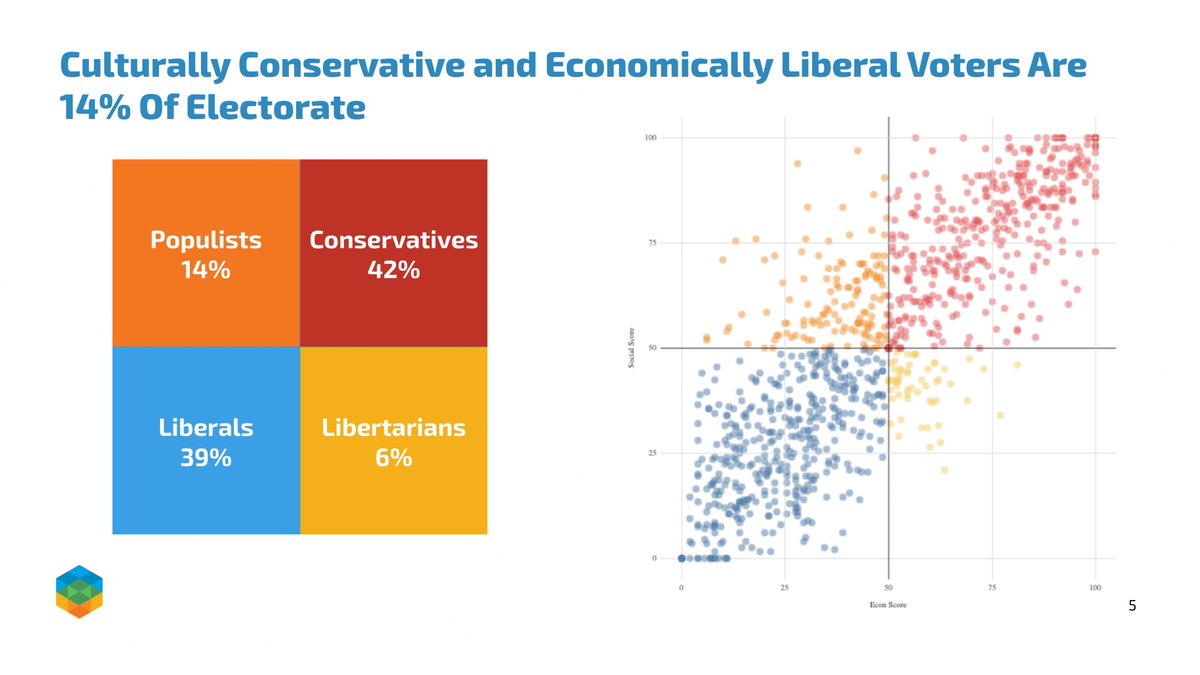The American Electorate is 56% culturally conservative and 52% economically liberal.
Check out our Quadrant analysis of the national electorate from our June Verified Voter Omnibus: echeloninsights.com/in-the-news/ju…
Check out our Quadrant analysis of the national electorate from our June Verified Voter Omnibus: echeloninsights.com/in-the-news/ju…

Populists - voters who are culturally conservative, economically liberal, make up 14% of the electorate. In contrast, Libertarians - voters who are economically conservative, culturally liberal - make up 6% of the electorate. 

The percentage of voters who are Strong Conservatives and Strong Liberals are roughly the same percentage of the electorate as Populists are. 

The Conservative and Liberal quadrants align heavily with their respective parties, whereas the Libertarian quadrant leans more towards Democrats, and the Populist group is split evenly across party lines. 

Clinton won Populists 41%-34% against Trump in 2016. Conservatives had the highest turnout rate at 93%, while Populists had the lowest at 82%. 

Trump won Populists 53%-38% against Biden in 2020 - a 19-point increase from his performance among Populists in 2016. Biden also won Liberals by 15 points more than Clinton. 

38% of Populists self-identify as ideologically moderate, while 33% identify as conservatives and 19% as liberals. 

1 in 5 Strong Liberals self-identify as ideologically moderate, compared to just 1 in 20 Strong Conservatives. 

The Liberal and Populist quadrants skew younger, with over half being under 50. 25% of Liberals are between 18 and 29, while the other quadrants only have an 11% share of 18-29 year old's. 

Liberals and Populists are the most racially diverse quadrants, with each having around ⅓ non-white voters. 

Populists - like Conservatives - list jobs and the economy as the biggest issue facing the country today, whereas Liberals believe the environment/climate change and healthcare are the most important issues. 

To determine where voters were on the quadrant, we asked if they agreed more with the liberal or conservative stance on a variety of cultural and economic issues. 



• • •
Missing some Tweet in this thread? You can try to
force a refresh





















